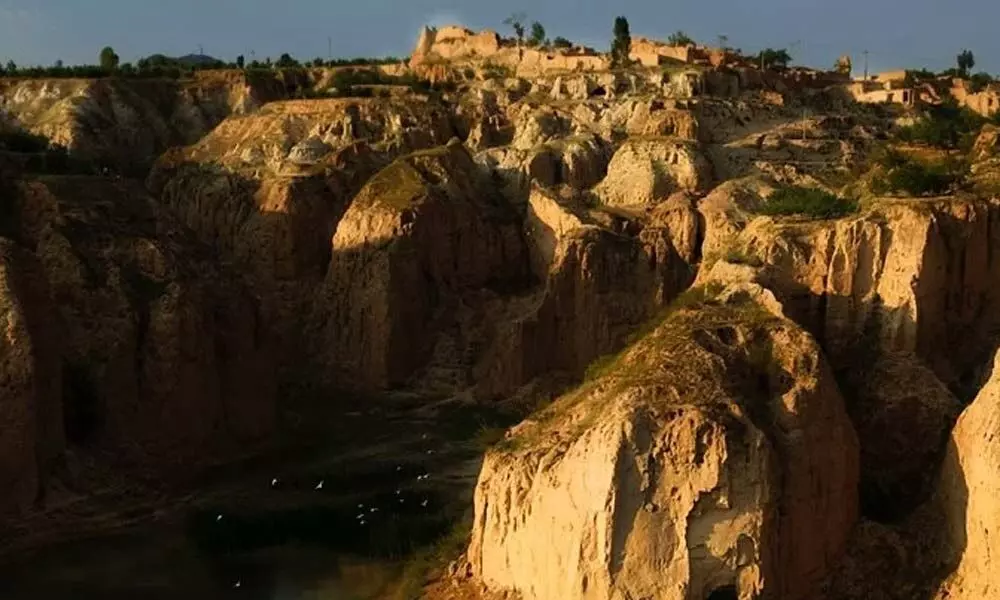Live
- 3 months after opening, Morampudi Flyover remains incomplete
- Skill enhancement session organised for school teachers
- Tribal Ashram school girl students fall sick again
- Grand finale of Innovation marathon begins at IIT Tirupati
- Ensure no inconvenience to bus passengers: MLA
- Being overweight surpasses smoking as Australia's leading health risk
- Rush of Devotees at Tirumala normal, to take six hours for darshans
- Thiruvannamalai turns a major revenue earner for RTC
- Development works in Warangal to take off on war-footing: Ponguleti
- Great day for America: Trump welcomes FBI chief's resignation announcement
Just In
Evidence Of An Ancient Human Culture Discovered In China


Evidence Of An Ancient Human Culture Discovered In China
- Scientists uncovered vestiges of an Old Stone Age civilisation less than 100 miles west of Beijing
- The Xiamabei archaeological site provides a rare peek into the lives of Homo sapiens and their now-extinct human ancestors that lived in the area 40,000 years ago.
Scientists uncovered vestiges of an Old Stone Age civilisation less than 100 miles west of Beijing, where ancient hominins manufactured tiny, blade-like implements from stone using a reddish pigment called ochre.
The Xiamabei archaeological site provides a rare peek into the lives of Homo sapiens and their now-extinct human ancestors that lived in the area 40,000 years ago.
The freshly discovered site is located in the Nihewan Basin, a depression in northern https://www.thehansindia.com/tags/China's hilly area. The excavation team discovered traces of the culture around 8 feet beneath, when they discovered a layer of dark, silty sand that radiocarbon dating and other investigations dated to between 41,000 and 39,000 years ago.
More than 430 mammal bones, a hearth, physical signs of ochre use and processing, a bone tool, and more than 380 miniature lithics, or small tools and objects formed of chipped or ground stone, were among the artefacts and animal remains found in this Stone Age silt.
Co-first author Shixia Yang, a researcher at the Chinese Academy of Sciences and the Max Planck Institute for the Science of Human History, said that the remains appeared to be in their former spots after the site was left by the people.
Co-senior author Francesco, a CNRS Director of Research at Bordeaux University and professor at the University of Bergen said that discovering a 40,000-year-old sediment layer scattered with such artefacts was a surprise.
The accumulation of tiny stone tools implies that the builders likely built and utilized specialised tool kits, he said, noting that this is the earliest-known ochre workshop for East Asia.
He said that the significant bit here is not the ochre in and of itself of the latest study, but its existence as component of a range of technologies and behaviours.
According to the authors, he first ochre piece discovered at the site had been "continuously abraded to generate a dazzling dark red ochre powder, the second, smaller piece of ochre, on the other hand, had a more crumbly texture and possibly came from a larger ochre piece that had been crushed.
The several forms of ochre had been pounded and scrubbed into powders of varying consistency, according to an investigation led by d'Errico.
Another investigation revealed that the reddish sediment around the ochre contained stony fragments rich in hematite, a mineral containing oxidised iron that gives red ochre its distinctive tint.
Furthermore, based on the data, they were unable to identify how the pigment was used. According to Zipkin, ochre can be utilised in adhesives as well as "symbolic applications" such as rock art paint or body paint that serves as both a cosmetic and a sunscreen. He added that this evidence does not rule out the likelihood that the colour was also utilised symbolically
Several stone tools from the site had traces of ochre on them, and the nature of these artefacts suggested that the pigment was used as a hide processing additive and as an element in a hafting glue - a sticky substance used to affix handles to stone implements.

© 2024 Hyderabad Media House Limited/The Hans India. All rights reserved. Powered by hocalwire.com






